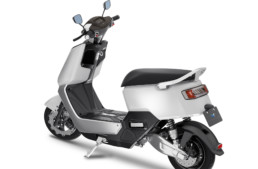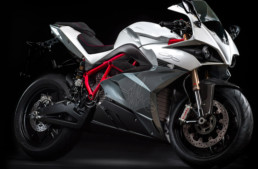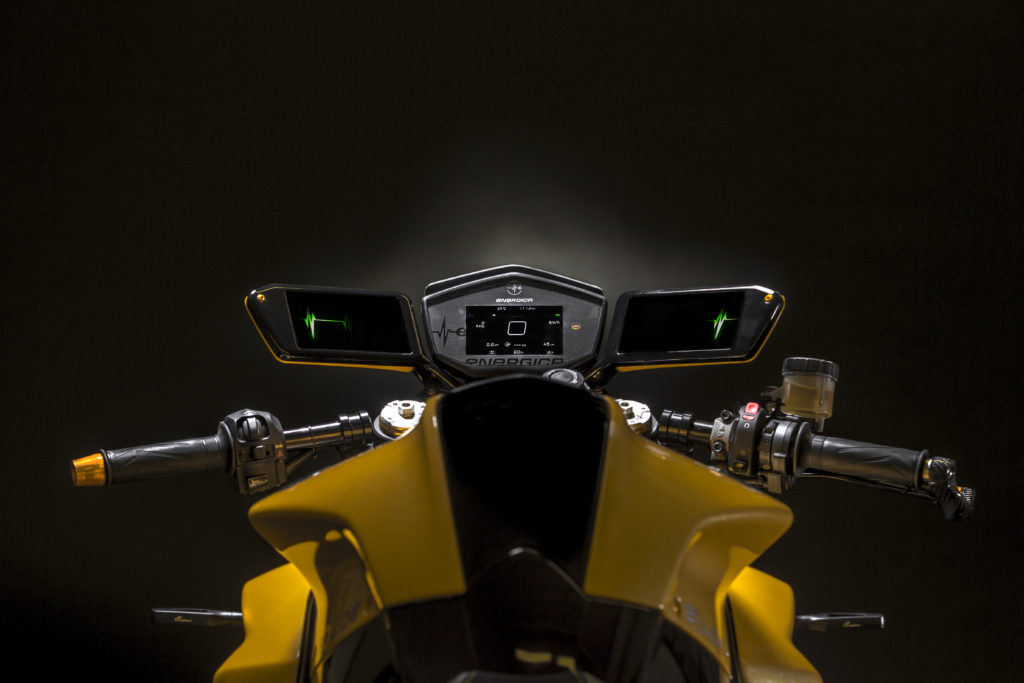
How does a manufacturer bolster rider safety via today’s array of existing smart gizmos and gadgetry? Well if you’re Energica Motorcycles, you partner up with one of the world’s leading technology companies and create a sleek, fully electric prototype that takes motorcycle safety from a passive to active pursuit. Towards the end of 2018, Samsung Italia and Energica unveiled their vision for the next step in rider safety, called the “Bolide-E” smart bike concept.
We recently caught up with Energica’s CTO, Giampiero Testoni, to pick his brain on the purpose of the high-tech project, the challenges he faced completing it, whether or not any of the Bolide-E’s smart safety features will trickle down to production, and what we have to look forward to down the road from the rapidly emerging sector of electric motorcycling.
The Bolide-E Concept
For anyone who might have missed EICMA, the Bolide-E prototype is based on Energica’s EsseEsse9 model, which has been treated to a myriad of trick Samsung-related tech. In place of traditional mirrors, the proto features a pair of Galaxy A smartphones that act as Heads-Up Displays. These smart mirrors are also linked to the “Smart Ride” system that has forward and rear-facing cameras, and an array of sensors allowing it to detect potential hazards, which alert the rider via the aforementioned pair of HUDs.
In place of a traditional keyed ignition, is a digital unit that enables users to unlock/start the bike via a Samsung Galaxy watch, meaning — just like with many modern cars — owners can simply walk into a vehicle and go, based on the proximity to a digital key sensor. Between the bike’s existing onboard sensors and hardware, and the pair of Smartphones’ GPS units and accelerometers, the Bolide-E can also record a host of different metrics about each ride, which can be reviewed (or shared) after the fact.
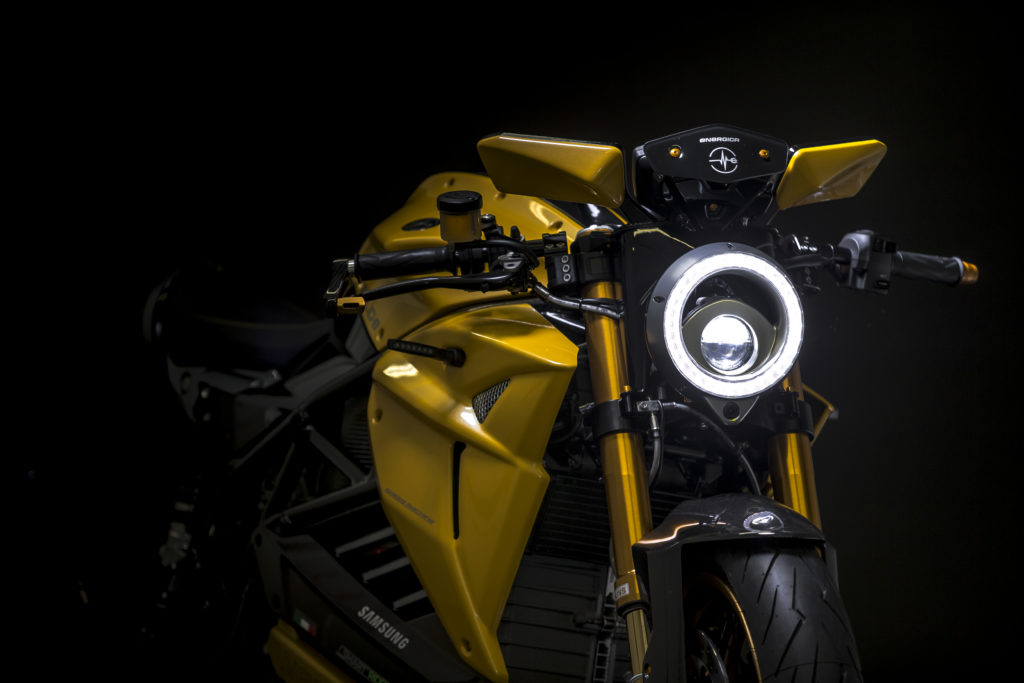
Testoni’s entire career has been working with motorcycles in various capacities. After earning a degree in mechanics, the Italian started at a Moto2 race team lead by CRP Technology in 2005, before going on to co-found CRP Racing. He helped construct a race team from the ground up in order to compete in the Italian and European championships, as well as in a few wildcards in the 125 Moto3 class.
“Motorcycles have always been my passion,” Testoni tells me in distinctly Italian accent. “So, to me racing is something of the apex of a career in motorcycling.”
After a few years as a partner at CRP Racing, electric racing was on the rise, and it didn’t take long for an intrigued Testoni to get in on the action, with his firm eventually developing the eCRP racer.
“In 2009 there was the first electric (Isle of Man) TT, and the following year I was asked to build an electric bike, and from then onwards I’ve worked on electric. We raced in 2010 and 2011 and we won the European championship and were runner-up in the World Championship for electric. It was still a small championship, but it was still an achievement“.
Around this time Testoni and the rest of the team started another concept project, developing a model that would ultimately become the first Energica prototype, thanks to funding from CRP. “From there onwards it was just industrializing the product, then the Ego, Eva, EsseEsse9, which were all built from the same platform.”
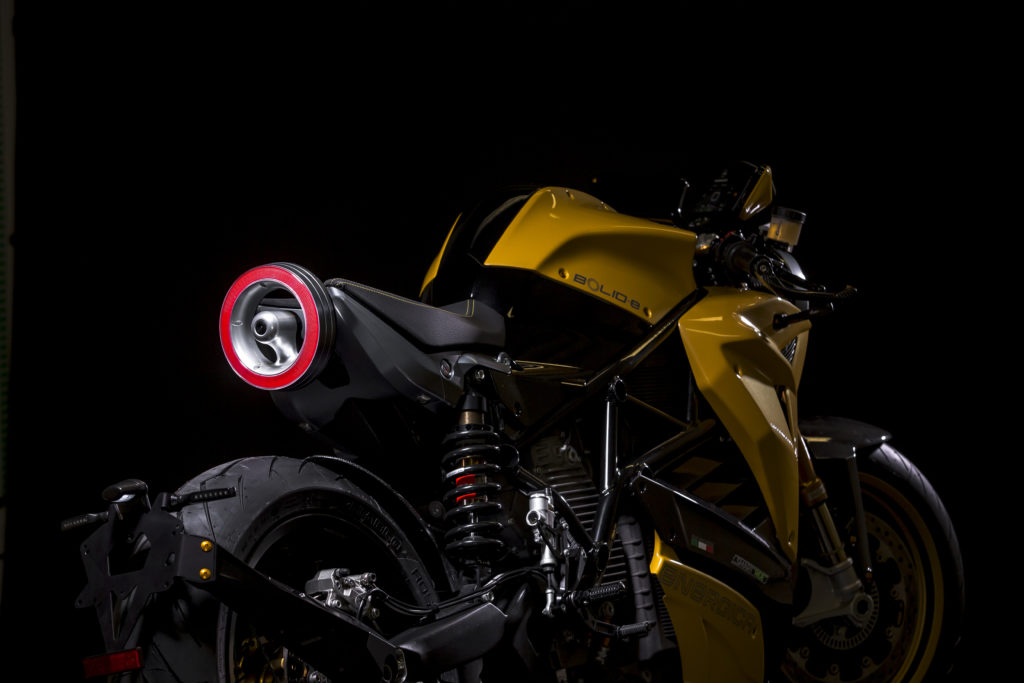
As CTO, Testoni looks after the development of all of Energica’s road and race bikes. This means he’s not only responsible for the wares you find in dealerships, but he’s also the chief of the firm’s ongoing Moto-E project, which will see riders competing in a single constructor spec-series aboard specially track-developed versions of the Energica’s flagship (Ego) model. The appropriately dubbed the Ego Corsa will debut at five circuits on the 2019 MotoGP calendar (and in 2020 and ’21).
The 160hp Corse-spec bike tips the scales at around 80lbs less than the stock model, largely thanks to carbon fiber bodywork, plastic battery enclosures replacing aluminum, and the removal of the onboard charger. Testoni notes their specially-developed battery is not only lighter, but also holds almost twice the capacity of the road model’s unit. The Ego Corse also looks the business, with full race bodywork and running gear, and a sleek and minimalistic new tail section.
“It’s a dream come true for us, and it says ‘okay, we’re the best on the market, and we’ll be the only one supplying these machines to everyone (in the new spec- series).”
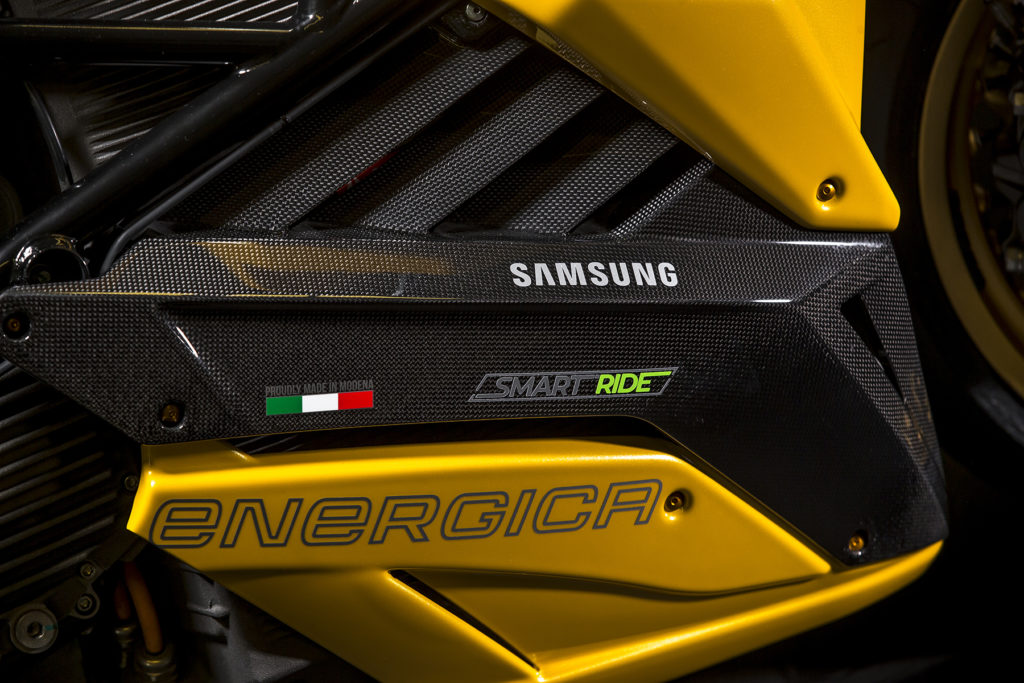
One of the first questions we had for Testoni was how the collaboration with Samsung came about? Testoni explained that Samsung Italia reached out to Energica to arrange a meeting exploring a joint project that could yield symbiotic results for both outfits. After the companies shared their future projects, an agreement was reached to develop a prototype for EICMA.
When we asked Testoni what the ultimate purpose of the project was and if any of the features on the prototype are slated for production in the near future, he explained that the Energica is hoping for that, though there’s still a lot of red tape to sort through before you’ll see these features on bikes in showrooms.
Teaming Up With A Tech Giant
“A big part of the aim was also to build a relationship with Samsung. We obviously wanted to showcase the technology, and the potential for the implementation of Samsung’s tech in our bikes. Plus we wanted to do it on something that nobody had done before, as our vision is to have the most innovative motorcycle on the market. Some of the features we already knew we wanted to implement in the near future, for example, the unlocking of the bike with the Galaxy Smartwatch is something we’re seeking to put into production.”
Testoni did however made it abundantly clear that he sees benefits to a relationship with the tech hardware giant. “Having a partnership with them will allow us to know what they have coming out next month, because we can’t really speak about years down the road with technology development, but we can accurately see what’s coming in the next month or two. So we can definitely gain an advantage from being privy to whatever Samsung Italy has slated to bring to market, enabling us to find ways of utilizing newly emerging technologies.”
When asked what benefit(s) all the Samsung tech afforded, Testoni stated unequivocally it’s improved rider safety, without sacrificing rider control.
“We don’t want to make autonomous intervention in the bike, we want the rider to still ride the bike. We want the aid of extra eyes in the form of cameras, sensors, etc — things that have become common in autonomous driving — that can signal the rider, via a flashing light on the dash or a haptic system, and alert them to potential dangers, like someone crossing the street.”
As to whether the motorcycle will intervene on its own, for Testoni the answer is no. “Our system would just alert the rider, but then it’ll be up to the rider to brake, or release the throttle, but it will be a great help. It means having more technology at your disposal.”
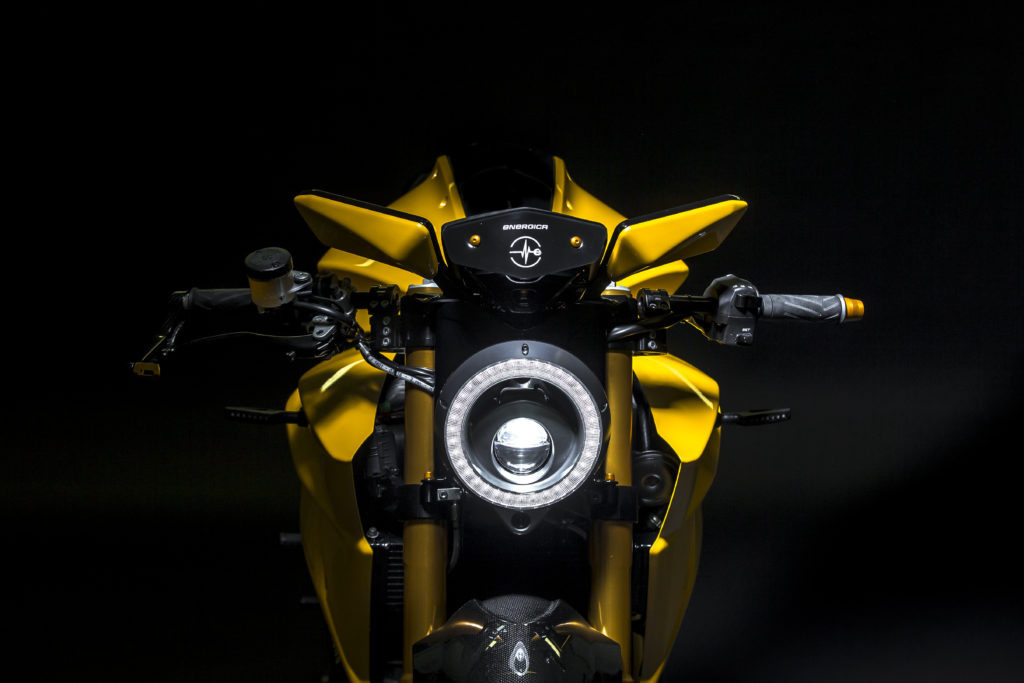
When asked about the biggest obstacles to creating and developing the Bolide-E, Testoni explained the most difficult aspect was time — or rather the lack of it.
“We were fortunate there weren’t any major problems, but time was definitely the biggest issue. We had to fit everything into only a few months and make it all work in time for the EICMA show. But, we’re pretty accustomed to making things work under difficult time constraints, so we finished a few days before the show, with enough time to get the photoshoot taken. As far as big technical issues, we didn’t face any.”
Bringing a prototype to EICMA is one thing, but as Testoni explained, industrializing tech features and bringing them to market is a markedly taller order, especially from a legal standpoint. “One of the most tricky parts right now is having the two screens in place of mirrors – that’s not currently allowed as the law states you still need to have physical mirrors. But we can take some of the knowhow gained from working on the Bolide-E and possibly still apply a screen somewhere else on the bike.”
“As far as the law goes today … we’re hoping this will change, as technology is moving really quickly, and I think the rule-makers will start to understand that we’re going to increasingly rely on new technologies. It’s always a challenge when you have something like a mirror that’s been around forever: altering a safety feature that’s been a staple is tough. They’re very, very slow in changing the laws and they make it hard to bring things to homologation,”
When asked where Testoni sees the future of electric motorcycles in the next 5-10 years, the CTO says he thinks acceptance and confidence will definitely continue to increase — in part thanks to Tesla — as will the public’s being education on EVs. Testoni thinks within the next couple of years, battery technology will advance to the point where electric bike performance will surpass internal combustion performance.
“What is not possible, we’re finding ways to make happen.”
Related Posts
June 20, 2018
The Current: How Moto3 Opened The Door For NEXT Electric
NEXT is an electric scooter startup,…
December 13, 2017
The Current: Moto-E World Cup To Race Energica Egos
MotoGP gets a new category in 2019, the…


